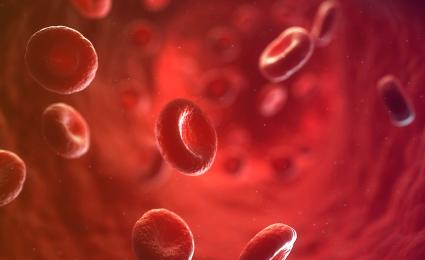By nature of their mechanism of action, Cell and Gene Therapies promise truly curative treatments for patients and a lucrative market for the pharma & biotech industry.


Cell and gene therapies: Strategies for commercial success
New solutions to overcome pricing and market access hurdles
The cell and gene therapy market is booming, yet significant clinical uncertainties remain. The therapies are expensive, and evidence of their effectiveness is difficult to gauge, hampering market access efforts. In this report, we look at the challenges, and propose solutions to aid pricing and reimbursement negotiations.

"It is still unclear how chronically underfinanced healthcare systems will sustain relatively high reimbursement levels for CGTs."
Cell and gene therapies (CGTs) have taken the pharmaceuticals market by storm since the introduction of the first agent, Glybera, in Europe in 2012. The treatments, which involve the transfer of cells or genetic material into patients to treat disease, are potentially curative and often require only a single “dose”. Today, after around 40 CGT launches across the EU and US, the market is worth around EUR 4.5 billion. A similar number are expected to be approved by 2028, when sales are projected to rise to EUR 19.2 billion.
But the commercialization of these medicinal “holy grails” is associated with considerable challenges. Primarily, they are expensive, much more so than conventional drugs. Cutting-edge technology means that their development costs are higher, while small target patient groups make it harder to recoup these costs. In addition, their benefit may not be as clear cut as, say, a new monoclonal antibody, making a favorable market access harder to secure. This poses a major challenge for manufacturers, regulators and payers – do CGTs offer long-term value for money?
There are many uncertainties around CGT value demonstration, not least their long-term therapeutic effect and its magnitude, the complexities of evaluating and funding them due to a lack of internationally harmonized evaluation criteria, and lastly enabling patient access while ensuring that manufacturers can refinance their R&D costs. The clinical challenges are partly being addressed, for example by making health technology assessments (HTAs) more CGT focused. But the commercial challenges, in particular around successful pricing and contracting strategies, persist.
Our paper assesses these pricing and market access challenges and offers potential solutions, such as innovative payment models.
"Manufacturers must get payers to cover high development and manufacturing costs by offering risk-sharing agreements and flexible payment modalities."
The challenges
Pricing and market access are among the most important factors in the commercial success of a CGT. In Europe, market access is usually secured through the HTA process. The assessments play a pivotal role in healthcare decision-making by offering a standardized approach to evaluating novel medical technologies and treatments. By fulfilling HTA requirements, decision-makers can make informed choices about adopting new medicines.
However, such frameworks may not be appropriate for assessing the value of one-time cures such as CGTs. For example, they may not consider non-health benefits, such as the potential to return to work, and the unique mechanisms and personalized nature of CGTs are partly in contradiction to HTA requirements of robust clinical trial evidence and desired long-term outcomes data.
Regarding pricing, the cost of CGTs is commonly perceived as exorbitant. But in reality, the costs of producing the agents are significantly higher than those of conventional therapies. The challenge of high commercial costs is compounded by government pricing restrictions on CGTs, as introduced by countries such as Germany. These can create pricing pressures and hamper innovation.
In our view, innovative treatments for CGT will therefore require a customized approach to demonstrate and evaluate value and address the challenges associated with pricing and market access. A detailed discussion of pricing and market access challenges can be found in the full report.
Value demonstration
Work is already underway to address the challenges of pricing and market access for CGTs. In Europe, significant progress has been made in HTAs and value assessment. A major advance has been the increasing recognition of the value of real-world evidence (RWE) in assessing how long-lasting curative effects are likely to reduce ongoing costs of patient support in chronic diseases. For example, the German regulator, the Joint Federal Committee, has recently incorporated RWE in pricing and reimbursement decision-making processes. See the full report for more details.
In addition, the EU’s new Regulation on Health Technology Assessment is improving efforts to harmonize clinical and scientific aspects of HTAs across Europe. However, responsibility for the evaluation of non-clinical aspects will still reside within individual countries. This is significant as striking a balance between clinical and non-clinical assessments is crucial for ensuring that the evaluation of CGTs is comprehensive. It also highlights the fact that it is commercial aspects, rather than clinical aspects, that remain the main challenge in CGT value demonstration.
Solutions
Resolving inequalities in pricing, access and HTA is critical to ensuring that new therapies are priced appropriately. Our paper looks at several potential solutions to overcome pricing and market access challenges. In particular, we look at innovative payment models for CGTs, such as risk-sharing agreements, that can aid in pricing and reimbursement negotiations. Such solutions will be critical to ensuring that these ground-breaking technologies continue to be developed.
Please see the full report for a detailed explanation of out proposed solutions, or contact one of our experts for more information.
Register now to access the full study, that explores the booming cell and gene therapy market, yet significant clinical uncertainties remain. Additionally, you get regular insights into Pharma & Healthcare topics.










